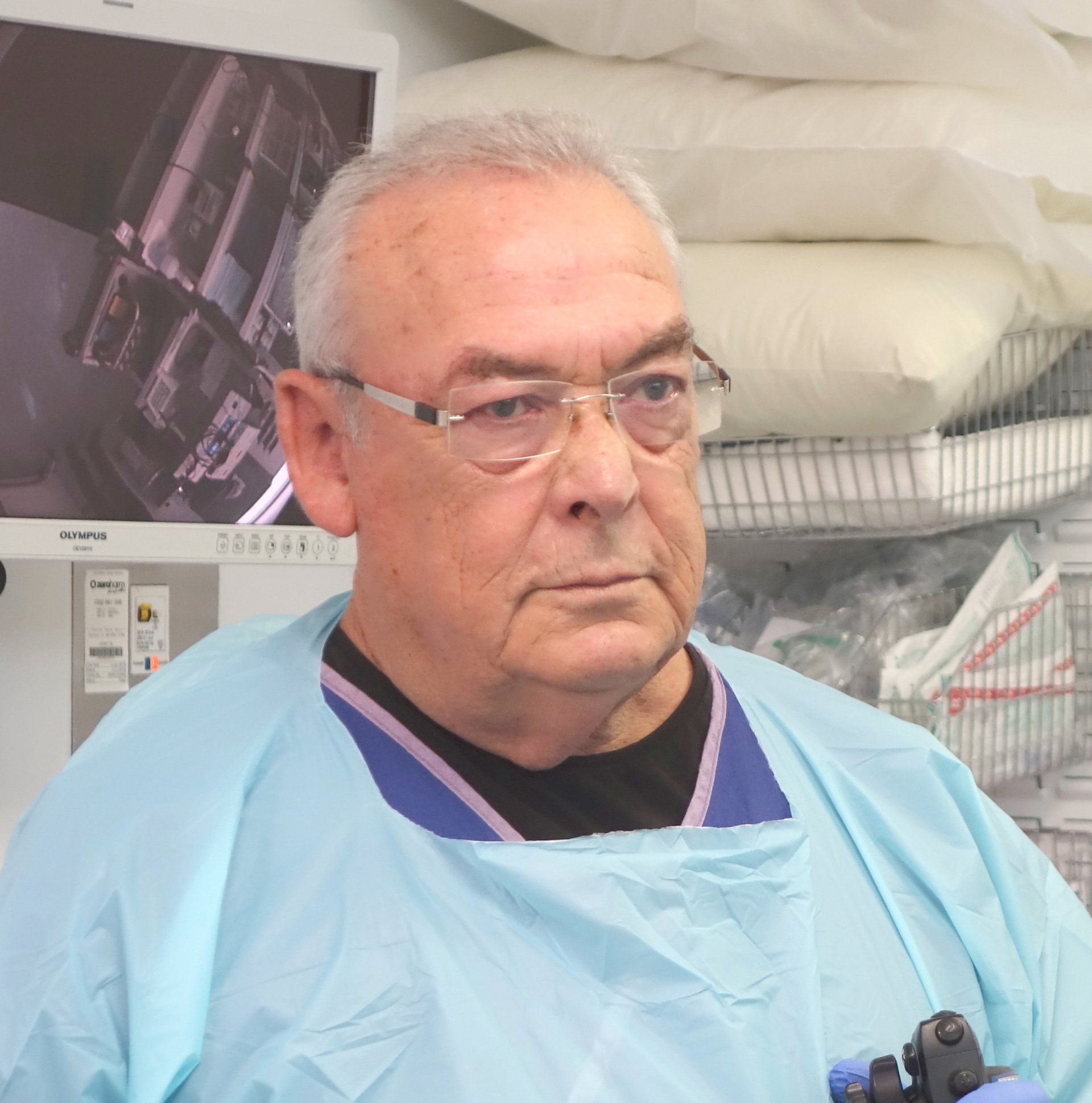Gastroscopy
What is Gastroscopy?
Gastroscopy (also known as Upper GI endoscopy) is a procedure that allows the examination of the upper part of the gastrointestinal tract.
This includes
- the oesophagus,
- stomach, and
- duodenum,
using a thin flexible tube with a built-in video camera, lens and light source (gastroscope).
CONSENT FOR GASTROSCOPY
GASTROSCOPY CONSENT FORM
A Gastroscopy enables a diagnosis to be made upon which specific treatment can be given. If a bleeding site is identified, treatment can stop the bleeding, or if a polyp is found, it can be removed without a major operation.
Other treatments can be given through the endoscope when necessary.
What are the Indications for a Gastroscopy?
Upper GI endoscopy can be helpful in the evaluation or diagnosis of various problems, including
- Difficulty or pain when swallowing
- Pain in the stomach or abdomen
- Tumours
- G.I. bleeding- hematemesis, melena, or iron-deficiency anaemia
- Troublesome heartburn
- Persistent ulcer-like pain
- Dyspepsia
- Anorexia or weight loss
- Taking aspirin or NSAIDs
- History of gastric ulcer
- Persistent nausea, vomiting, or symptoms suggestive of pyloric obstruction
- Gastric ulcer demonstrated by barium meal
- Duodenal biopsy for suspected malabsorption
Gastroscopy for Diagnosis
Gastroscopy is usually performed to evaluate symptoms of upper abdominal pain, nausea, vomiting, weight loss, difficulty swallowing and bleeding.
Gastroscopy is the most accurate means of detecting inflammation and ulcers of the oesophagus, stomach and duodenum.
Gastroscopy can detect early cancer and by performing biopsies (taking small tissue samples) doctors can distinguish between benign and malignant (cancer) conditions. Biopsies are taken for many reasons and do not necessarily mean that cancer is suspected.
Gastroscopy for Treatment
Gastroscopy may be used to treat conditions present in the upper gastrointestinal tract. A variety of instruments can be passed through the endoscope, which allows many abnormalities to be treated directly, with little or no discomfort. For example,
- stretching narrowed areas,
- removing polyps or
- treating upper gastrointestinal bleeding.
What Preparation is Required?
Before gastroscopy, the stomach must be completely empty.
You should have nothing to eat, for six (6) hours before the examination. You may drink plain water (only) until two (2) hours before you come to the hospital.
The hospital will give specific information about the time to begin fasting, depending on the time of day that your test is scheduled.
Medications Before the Procedure
Diabetes medications: omit your diabetes tablets on the morning of the test. If you take insulin you should take half your usual dose. The nurses will check your blood sugar when you arrive at the hospital.
Blood-thinning medicines: anticoagulants (blood thinners) such as warfarin (Coumadin), apixaban, etc. must be stopped for 3 to 5 days. You must discuss this with your own doctor as you may need to have injections during this period.
Anti-platelet agents such as aspirin and clopidogrel (Plavix) usually need to stop for one week. If you have stents in your heart DO NOT stop any medicine without your cardiologist’s permission. If necessary, aspirin can be continued up to the day of the test.
Most other drugs (for high blood pressure, cholesterol, depression, reflux, etc., can be taken up to 2 hours before coming to the hospital with some water.
What Can Be Expected During a Gastroscopy?
Your doctor will review with you why a gastroscopy is being performed, whether any alternative tests are available, and possible complications from the procedure.
Upper GI endoscopy is usually performed on an outpatient basis.
Like a colonoscope, an endoscope is a long, thin, flexible tube with a tiny video camera and light at the end.
By adjusting the various controls on the endoscope, the endoscopist can safely guide the instrument to carefully examine the inside lining of the upper digestive system. The high-quality picture from the endoscope is shown on a TV monitor which gives a clear, detailed view. In many cases, upper GI endoscopy is a more precise examination than X-ray studies.
An anaesthetist will put a small cannula (plastic tube) into your vein and give you medicine so that you are sedated or asleep.
While you are in a comfortable position on your left side, the endoscope is passed through your mouth and then in turn through the oesophagus, stomach and duodenum.
The endoscope does not interfere with your breathing during the test. Most patients are asleep for the procedure and do not remember it.
What Happens After the Gastroscopy?
After the test, you will be monitored in a recovery area until most of the effects of the anaesthetic have worn off.
Your throat may be a little sore for a while, and you may feel bloated right after the procedure because of the air introduced into your stomach during the procedure.
You will be given something to eat and drink when you are awake. In most cases, your doctor will inform you of your test results on the day of the procedure, however, the results of any biopsies taken will take several days.
What are the Possible Complications of Gastroscopy?
Endoscopy is safe. Complications can occur but they are rare when the test is performed by doctors with specialised training and experience in the procedure.
Bleeding may occur from a biopsy site, or where a polyp has been removed. This is usually minimal and rarely requires blood transfusions or surgery. Localised irritation of the vein where the medication was injected may cause a tender lump lasting for several weeks but this will go away eventually.
Applying heat packs or hot, moist towels may help relieve discomfort. Other potential risks include a reaction to the sedatives/anaesthetic used and complications from heart or lung disease. Major complications, e.g. perforation (a tear that may require surgery for repair) are very uncommon and occur less often than once in 10,000 tests.
It is important for you to recognise early signs of any possible complications. If you begin to run a fever after the test, begin to have trouble swallowing, or have increasing throat, chest or abdominal pain, let your doctor know about it promptly or contact your local Emergency Department.
Recovery from Gastroscopy Procedure
You will need to arrange to have someone accompany you home from the examination. Until the following day we recommend patients do not:
- Drive a car
- Work machinery
- Consume alcohol
- Sign legal documents
- Make important decisions
If any of your questions have not been answered here, please feel free to discuss them with the endoscopy nurse or your doctor before the procedure begins.
Dr Donald Walker
Write your caption hereMore
Dr Johan Van Den Bogaerde
Write your caption hereMore
Trusted for more than 25 Years
PANCREAS & BILIARY
Digestion Problems - Dyspepsia









